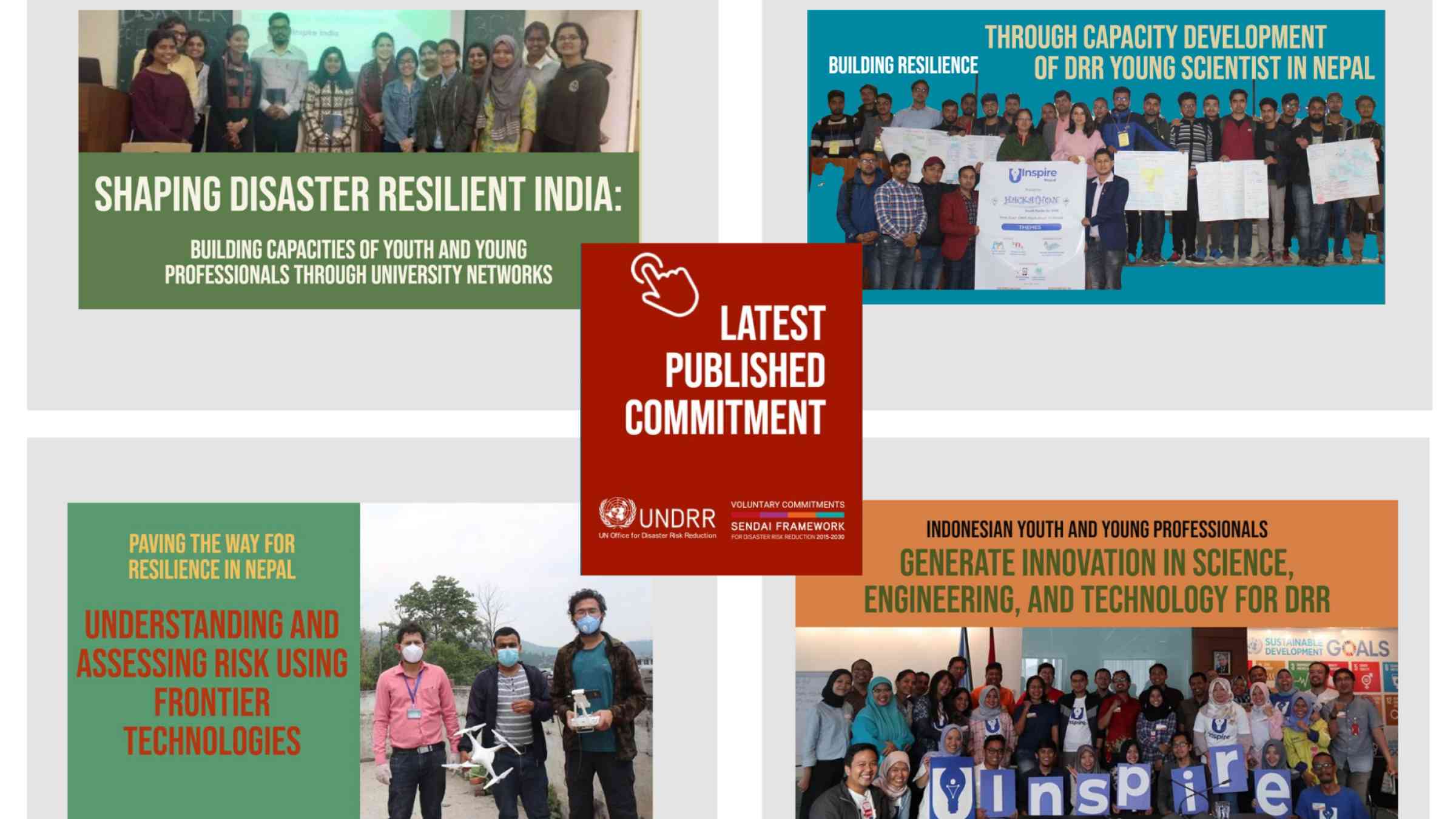Empowering Asia-Pacific stakeholder groups to publish their Voluntary Commitments

Globally, Asia-Pacific remains the most disaster-prone region in the world, as has been confirmed again in the recently published report by the UN Office for Disaster Risk Reduction (UNDRR) on the “Human Cost of Disasters.”
The study shows that six of the ten deadliest mega-disasters in the last 20 years happened in the Asia-Pacific region. Even for low scale disasters, such as floods, 41% of all recorded floods happened in Asia-Pacific, which is home to 93% of the world’s flood victims.
The primary responsibility for mitigating these disasters and achieving the Sendai Framework for Disaster Risk Reduction lies with governments. However, effective disaster risk governance requires a whole-of-society approach, meaning the needs of all members of society need to be considered, and society in turn must also contribute to reducing disaster risks.
“Addressing these interconnected challenges demands an interconnected response. While states have a critical primary responsibility, the reality is that we all must recognize, prevent, and avoid risk. Voices for all relevant actors must be heard and their expertise and contributions must be recognized,” says Mr. Animesh Kumar, Officer-in-Charge and Deputy Chief of UNDRR’s Regional Office for Asia-Pacific.
To ensure these different voices are represented in regional policy discussions, UNDRR engages with what are known as “stakeholder” groups. Each group represents a specific segment of society, including vulnerable groups, such as women, children, and persons with disabilities.
Engagement, however, is only the first step in UNDRR’s stakeholder strategy. The goal is to empower stakeholder groups to become agents of change and ultimately partner with them on meaningful joint programmes.
As many stakeholder groups are already active contributors to global, regional, and national risk reduction efforts, UNDRR Asia-Pacific organized a briefing for the lead coordinators of the major stakeholder groups to introduce them to a tool that can help them gain recognition for their work, learn what others in their field are doing, and potentially connect with new partners from around the world.
The tool is the Sendai Framework Voluntary Commitments, which is an online platform that was launched in December 2018 to allow organizations and groups to publish commitments they have made to achieve certain deliverables that are aligned with the Sendai Framework.
“Voluntary Commitments platform is not simply for listing aspirational statements, but it is a reporting and accountability tool to monitor the implementation of the Sendai Framework,” explained Ms. Yuki Matsuoka, Head of the UNDRR Office in Japan, which manages the platform.
In addition to the advocacy gained by showcasing their work on the platform, the best Voluntary Commitments are showcased at UNDRR’s Global Platform as good practices for others to emulate.
To date, 45 Voluntary Commitments have been published, which contain 140 deliverables. Among these deliverables, already more than 50% have been reported as delivered, according to Ms. Matsuoka.
The briefing included a tutorial that demonstrated how stakeholder groups can upload and publish their commitments. The platform also serves as a reporting tool through its automated alerts, which can help remind groups to provide progress updates.
Two groups that have recently published their Voluntary Commitments shared their experiences using the platform and praised UNDRR staff for their support and guidance throughout the process.
The first was the U-INSPIRE Alliance, which is an alliance of young scientists and professionals working in science, engineering, technology, and innovation to support disaster risk reduction. The alliance has close to 1,000 members distributed over chapters in 12 countries.
The U-INSPIRE national chapters in Nepal, India, and Indonesia had submitted a total of four Voluntary Commitments. Speaking on the experience, Ms. Rahma Hanifa, the Secretary-General of the U-INSPIRE Alliance, said:
“We received some very good assistance from UNDRR throughout the process. Even though we did not feel comfortable at the beginning, we became more confident thanks to the encouragement and assistance.”
The second group was the Disability-inclusive Disaster Risk Reduction Network (DiDRRN), which is a network of organisations in Asia-Pacific that are focused on promoting the integration of the needs of persons with disabilities in disaster risk reduction policies. They had published a Voluntary Commitment that covered work being done by members of their network in ten countries.
Speaking on their behalf was Mr. Muhammad Atif Sheikh, Honorary Chairperson of the South Asian Disability Forum (SADF), who in addition to commending UNDRR on its support, said that the publishing of their Voluntary Commitment had been helpful to their work.
“We found the platform to be very useful because it enables us to share our work and its tangible results, learn about what others are doing to support the implementation of Sendai Framework, which in turn, facilitates collaborations across wider stakeholders,” said Mr. Sheikh.
The briefing also kicked off a discussion around the 2021 Asia-Pacific Ministerial Conference on Disaster Risk Reduction, where stakeholders are expected to announce their new statements of action.
To learn more about the Sendai Framework Voluntary Commitments and how to submit a commitment, organizations can visit their dedicated website:
https://sendaicommitments.undrr.org